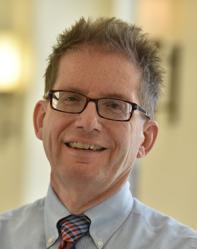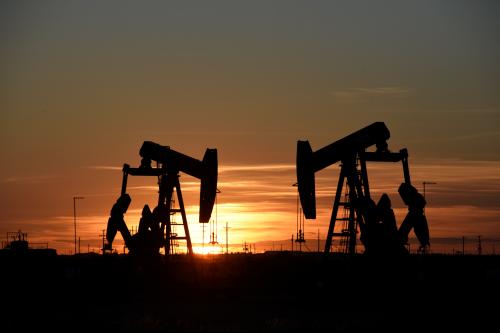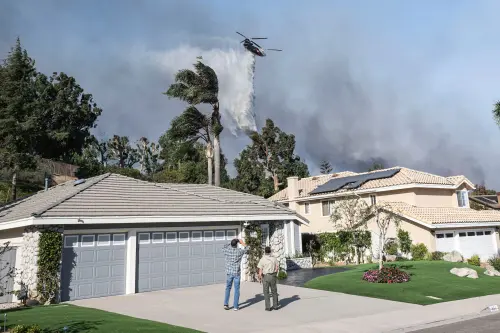At the United Nations Climate Change Conference in Dubai, the United Arab Emirates, known as COP28, leaders from around the world gathered to discuss solutions to climate change and global warming. Brookings experts assess the outcomes of this closely watched conference.
Justice and equity take a back seat … again
Organizationally, COP is one of the few spaces on the international stage where indigenous populations and under-resourced nations are given an opportunity to speak across the table with leaders from global superpowers. Realistically, COP28 attracted over 97,000 people including 2,456 fossil-fuel lobbyists who out-numbered nearly all individual country delegations. The end of COP27 closed with a historic agreement to provide “loss and damage” funding for vulnerable countries that shoulder the heavy burden of climate change. But, after launching the fund on day one, many of the other decisions at COP28 made that agreement look more like a symbolic concession than real action.
The loss and damage fund provides a reparative mechanism for industrial powers to transfer disaster recovery aid to developing nations. This was a 28-year hard-won acknowledgment that those responsible for the most emissions should cover the damages. However, the fund has garnered only $429 million, well below the damages in developing countries that are estimated at $400 billion annually, with no commitment made to increase levels of funding. The U.S. contribution of $17.5 million is paltry considering the United States is the largest contributor to cumulative greenhouse gas emissions.
The final agreement to “transition” away from fossil fuels is not a resounding win for justice either. By leaving room for the continued expansion of fossil fuels, the agreement will likely prolong and deepen the risks to the most economically and environmentally vulnerable communities, including in the United States. An estimated 14 million Americans live in cancer hotspots connected to oil and gas pollution and millions more are exposed to dangerous climate extremes. To remedy these injustices, and others internationally, we need a commitment to phase out fossil fuels.
Policy and money are what matters
Two little words were the center of debate in Dubai: fossil fuels. The role of fossil fuels in climate change is clear, but the consensus-based decisionmaking at these events makes any sensible discussion of them extraordinarily difficult. Therefore, we should be overjoyed that the communique, for the first time, even mentioned those two little words, right?
Sure, it’s great that the communique called for a “just, orderly, and equitable” shift away from fossil fuels. The tone here is right, as the challenge is more difficult for some nations than others. But the ugly fight over stating a blindingly obvious fact misses what the world really needs out of its leaders.
The COP28 communique is non-binding. Nothing that happened in the negotiating rooms in Dubai changes the situation on the ground in the nearly 200 countries that sent representatives. Policy and money are what matters — what these leaders do when they go home. The wealthy countries, the world’s largest emitters of greenhouse gases, need to enact policies to reduce demand for fossil fuels and encourage the uptake of alternatives. They also must work to increase the flow of capital so middle- and lower-income countries can do the same, while also providing modern energy services to those that do not have access today. Additionally, the lowest-income countries have barely contributed to the climate change we see today but cannot afford the burden of coping with our changing world. Operationalizing the loss and damage fund to aid these countries is a key outcome of COP28.
Financing for climate adaptation is still insufficient
At COP28, my colleagues at the Global Center on Adaptation and the Climate Policy Initiative and I launched the report State and Trends in Climate Adaptation Finance 2023, where we analyzed the most comprehensive and up-to-date information on climate finance flows, globally and with a deep dive on Africa. The good news is that global climate finance has doubled from $653 billion in 2019-2020 to $1.3 trillion annually in 2021-2022. However, the percentage of climate finance being utilized for adaptation is decreasing, from 7% in 2019-2020 to 5% of total climate finance in 2021-2022.
According to the World Meteorological Organization’s State of Climate in Africa report, Africa is one of the regions most affected by climate change. However, it only received 20% of global adaptation finance flows ($13 billion) annually in 2021-2022. In contrast, the Asia and the Pacific region received about 45% of global adaptation finance flows. Based on investment needs presented in nationally determined contributions (NDCs) prepared by African countries, it is estimated that the region needs about $53 billion per year between 2020 and 2035. However, in our report, we present the reasons why NDCs may significantly underestimate the actual adaptation needs, possibly by as much as 100%. This means that, at the current level of adaptation funding flows, Africa will only mobilize $195 billion by 2035, while its needs may be eight times greater at $1.6 trillion. Finally, we reviewed the financial instruments used by African countries to marshal resources for adaptation. Close to 80% of adaptation finance in Africa comes from loans or government budgets. Given the challenging debt situation on the continent, the mobilization of more grants for adaptation is more urgent than ever.
COP offers a platform to address the environmental impact of AI
Delegates convened in Dubai for COP28 on the heels of dire climate change warnings and reflected on the global climate progress to date — it painted a bleak picture. But as the ink dries on the unprecedented final declaration, navigating a transition away from polluting energy sources is not the only looming challenge ahead: the agenda omitted understanding the environmental footprint of artificial intelligence (AI) amid worsening climate change.
AI is vital for global climate change mitigation and adaptation. It demonstrates promise for forecasting extreme weather events, increasing the efficiency of electric grids, and discovering sustainable materials. Indeed, COP28 facilitated discussions at the intersection of AI and sustainability.
However, AI training and deployment come with environmental drawbacks. The digital infrastructure necessary to enable advancements like generative AI intensifies greenhouse gas emissions, consumes substantial amounts of energy, and extracts a variety of natural resources that can disproportionately affect poor and marginalized communities. The rapid expansion of data centers, for example, may strain precious reserves in water-stressed regions.
This presents an opportunity for U.S. leadership. Few track AI’s unique environmental footprint on a global scale. Encouraging data transparency and the reporting of emissions, water, and energy would create measures to inform global climate strategies that merge AI sustainability considerations with climate equity for those with disproportionate environmental burdens. The United States could meet this emerging challenge by calling for meaningful environmental data and metrics from tech companies. Global climate governance demands international norms, collaboration, and accountability for the negative environmental externalities of AI.
New norms, smart targets, and open questions
It’s easy to be skeptical in the face of any COP outcome. Governments have a spotty record in translating elevated diplomatic language to adequate practical action. Nonetheless, COP28’s language on transitioning away from fossil fuels marks a milestone in evolving global norms. Among a broader range of embedded commitments, the pledge to triple renewable energy capacity by 2030 is also ambitious, time-bound, and doable. It requires less than a doubling in the recent rate of annual expansion, from roughly 9% over the past seven years to around 17% over the next seven.
At a practical level, another COP28 milestone was the launch of a loss and damage fund, initially hosted at the World Bank. Early pledges should help the instrument get off the ground, although many first-order questions remain around whether it will be of adequate scale and impact to meet the core needs of developing countries carrying the greatest burdens of climate change.
Inevitably, an ultimate test of COP28 will lie in how it affects public and private investment strategies in countries around the world over the next few years. As our colleague Amar Bhattacharya and co-authors emphasized in a prominent new report launched in Dubai, many forms of decisive action are still required. In the near term, a “better, bolder, and bigger” World Bank and other multilateral development banks are crucial to global climate success. Whether the world moves quickly to revamp these and related institutions frames a central question for COP28 follow-up.
A historic compromise on fossil fuel use
Although the final agreement text from COP28 does not go as far as many climate advocates had hoped with regard to phasing out fossil fuels, it nonetheless includes historic language on the necessity of “Transitioning away from fossil fuels in energy systems.” Like every other climate agreement coming out of the COP, it is a non-binding consensus document among almost 200 nations, several of which are oil-producing countries and wield a lot of influence. These nations intrinsically have powerful incentives to retain the status quo rather than advocate for a reduction in fossil fuel use, which is why the compromise language in the COP28 agreement is still noteworthy.
In general, the non-enforceable outcomes of the COP are better viewed as a broad framework and signal for national governments and the private sector to develop their own climate mitigation and adaptation measures from the bottom up. As a result, regional and national climate policies such as carbon pricing schemes are being implemented around the world, and the European Union’s Carbon Border Adjustment Mechanism (CBAM) will be much more consequential. The EU’s CBAM, in particular, has the potential to really move the needle and force countries to adopt their own carbon pricing regulations, because it will make them choose between raising carbon tax revenue within their own borders (through a domestic price) or having their companies pay the taxes when exporting to the EU instead. At the end of the day, it comes down to enforceable climate policies enacted by governments that will determine how global progress in reducing emissions will look like.
Methane was center stage at COP28
Methane sustained its recent march from climate policy obscurity to center stage at COP-28, confirming the Economist’s declaration that “Methane’s Moment” has arrived. The global framework for reducing methane from oil and gas production remains a loose compilation of non-binding public and private pledges. But methane’s saliency continues to rise, reflecting its role in over one-third of current global warming. Technologies to measure and mitigate releases keep maturing, and trans-Atlantic oil and gas-producing and consuming nations rolled out bold new policies just before or during COP deliberations.
The United States unveiled a suite of new regulations, including third-party monitoring of “super emitters.” These will be coupled with expanding subsidies to accelerate technology transition, a modernized measurement system, and fees on low-performing firms. Canada has followed suit with a new round of tightened regulations and plans to integrate methane reduction into a cap-and-trade system designed to cut oil and gas sector carbon emissions. Europe has announced bold new methane regulations on energy that it produces and consumes, amid growing indications that its leadership in carbon border adjustment development will extend to methane.
These North American and European policies face significant political challenges to timely and effective implementation. And there has been minimal progress in transitioning national best practice models into a credible regime to reliably drive down global emissions. Nonetheless, these latest steps demonstrate methane’s ongoing evolution from symbolic declarations toward devising regulatory, pricing, and disclosure tools that could support near-term climate protection.
Improve protection for climate migrants
In its first-ever report in 1990, the Intergovernmental Panel on Climate Change recognized that “the gravest effects of climate change may be those on human migration.” In 2022, an estimated 32.6 million people were newly displaced within their own countries by natural disasters, primarily floods, storms, and droughts. By 2050, the World Bank predicts 216 million people could be internally displaced by climate change.
The slow-onset effects of environmental degradation, especially sea-level rise and prolonged droughts, and resource scarcity can further fuel instability, inequalities, and the risks of conflict, increasingly driving migration across international borders. Yet people displaced by climate-related effects are not recognized as refugees under international law. While trying to reform the U.N. Refugee Convention by establishing a category for “climate refugees” is both legally challenging and fails to recognize that migration is multi-causal, people displaced for climate-related reasons need protection and safe, orderly pathways for movement. Innovative blueprints exist. Latin America and the African Union, for instance, have expanded the existing protection regime at regional levels to recognize environmental drivers through disturbances to “public order.” Bilateral agreements present another option, such as the “mobility pathway” established between the Pacific Islands nation of Tuvalu and Australia.
The COP28 global stocktake recognized the need for “policymaking and planning for displacement and planned relocation,” yet the urgent complexities at the intersection of environmental changes and migration remained underexplored at the national party level. The absence of representatives from Pacific Island states, disproportionally affected by rising sea levels, from the final negotiation is unacceptable. Future summits must ensure inclusive decisionmaking and explore how to create safe migration pathways through humanitarian, economic, and other programs. within the frameworks of The Nansen Initiative and Global Compact on Safe, Orderly, and Regular Migration. The Global Refugee Forum after COP28 can further accelerate this conversation.
Slow progress on closing Africa’s climate finance gap
As COP28 has come to a close, it is clear that climate finance was African leaders’ foremost priority. The climate finance gap in Africa is estimated by the European Center for Development Policy Management to be between $200-400 billion each year through 2030. COP28 showed the growing but insufficient efforts to bridge this monumental gap, including the announcement of several initiatives such as ambitious financial commitments for funding the Loss and Damage Fund from the United Kingdom ($50.5 million), the United States ($17.5 million), and the members of the European Union ($245 million), as well as more than $12.8 billion pledged from 31 different countries for the Green Climate Fund. Public-private partnerships were also launched for green electricity and secure food systems, while multilateral development banks announced an initiative to promote early warning systems for all by 2027. Progress was also made on implementing innovative financing tools, including the African Development Bank’s establishment of “green banks,” which could raise up to $1.5 billion by 2030.
These collaborative efforts, among the many others announced at COP28, are helping African countries secure the needed funding for Africa to adapt, mitigate, and build resilience to climate change. However, the sheer size of the financing gap means that the mobilization of resources must be rapidly accelerated beyond what was achieved at COP28. As I recently wrote with Chido Munyati, African and global leaders alike must deliver a transformative, innovative, and disruptive approach to deliver sufficient and sustainable climate financing for Africa. Recommendations for a better climate financing future include accelerating private sector investment; capitalizing on emerging technologies, including fintech solutions and blockchain technology; and creating the enabling environment to secure more climate financial commitments and successful deliveries.
Industry is doing a lot of what COP cannot
The COP meetings on climate change are akin to Kabuki theater. The script runs seemingly forever yet unfolds in ways familiar to the audience. Things suddenly appear and vanish from the stage, but nobody’s much surprised. The conclusion comes in a short, intense act that ties up loose threads before the actors vacate the scene. A year passes and the structure repeats.
Formally, this year’s COP, hosted in Dubai, was a “stocktake” to assess how the world’s doing with climate policy. Scrubbed from the draft final agreement was any mention of a “phaseout” of fossil fuels — even though most fossil fuels must be abandoned if the world is to eliminate warming pollution. Alarmed by the draft, intense negotiations sprinted through the final few days to yield a mealy compromise that demands a “transitioning away from fossil fuels … by 2050.” The curtain fell as delegates stumbled home.
Most of this diplomacy is irrelevant because mealiness doesn’t send clear signals to investors who are key to any massive cuts in emissions. Mealy or not, at least the diplomats found agreement and avoided failure, which would have been worse. They sent a signal about the direction — deep cuts in emissions — and there are now groups in every major industry working on that challenge and experimenting with new approaches. New facts on the ground will make even bolder policy action possible.
More important than the formal talks were all the industry side events in Dubai, replete with action plans and high-quality evidence of progress. Among them: a new agreement to triple the use of nuclear power and commitments to make big cuts in methane, a powerful warming gas.
We are making progress. But the world is still in for a lot of harmful warming. Dealing with that reality is the script for future COPs.
The Brookings Institution is committed to quality, independence, and impact.
We are supported by a diverse array of funders. In line with our values and policies, each Brookings publication represents the sole views of its author(s).



















Commentary
The successes and failures of COP28
Brookings experts weigh in
December 14, 2023